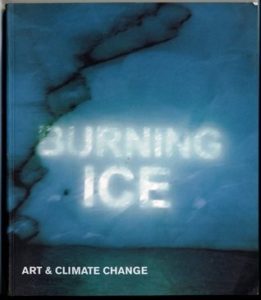What a busy fall! Â Not as much time to blog as I would have liked following my trip to the Arctic this summer, but the trip has given me lots to think about in relation to climate change and the role that artists can play in addressing it. Â This was furthered by listening to a talk by Nigel Roulet in October – he is an eminent Canadian environmental scientist from McGill university who shared his belief in the power of the arts to communicate environmental ideas in moving ways, something that science hasn’t typically done well in the past. Â
Perhaps the best way to magnify the communications about climate change is to take a multi-faceted approach.  The Cape Farewell project is one of the best examples of this so far; by bringing environmental scientists together with artists, musicians, writers and filmmakers, aiming to create innovative ways to reach a wider audience about the impacts of climate change.  Their interdisciplinary book, called Burning Ice: Art and Climate Change, serves as travelogue, atlas, art catalogue, and scientific documentation all in one.  Other groups have experimented with this model, including Greenpeace and 350.org, bringing scientific knowledge together with the affective and intuitive ways of knowing from the arts to create memorable and moving messaging about climate change.  The Canada C3 expedition I was on last summer is aiming to do the same.  They have a number of legacy projects on the go to share our collective experiences about climate change, reconciliation, and inclusion in the North; I’ll share these as they come available.



